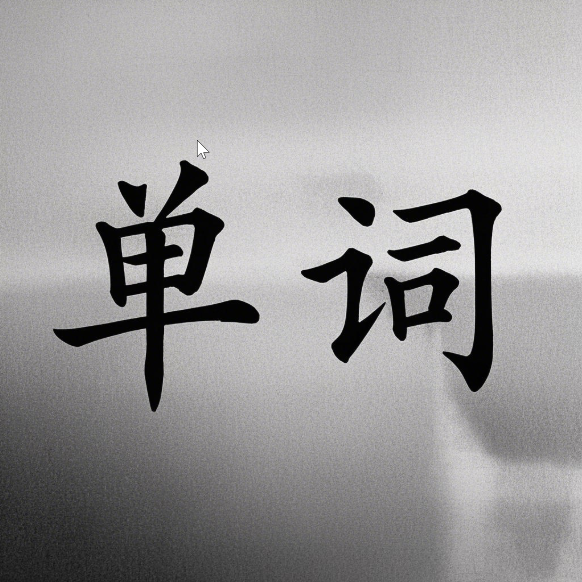dubbing
简明释义
n. 配音;爵士的授予;制假蝇饵的材料
v. 把……称为;封……为爵士;配音,译制(dub 的现在分词)
英英释义
单词用法
配音演员 | |
声音配音 | |
配音工作室 | |
为电影配音 | |
用某种语言配音 | |
后期制作配音 |
同义词
反义词
| 字幕翻译 | The film was released with subtitles for non-native speakers. | 这部电影为非母语观众发布了字幕。 | |
| 原版 | 我更喜欢用原语言观看电影。 |
例句
1.My dream is to be a dubbing.
我的梦想是当一名配音员。
2.Therefore they often dined out in a group but seldom had an appointment by themselves. In the day when they were photographed by the paparazzi, they had to do dubbing.
至于他们被偷拍那天,是因为他们要配音但又未到时间,故开工前一起吃饭。
3.Therefore they often dined out in a group but seldom had an appointment by themselves. In the day when they were photographed by the paparazzi, they had to do dubbing.
至于他们被偷拍那天,是因为他们要配音但又未到时间,故开工前一起吃饭。
4.We have recreated the voices of a lot of famous people that were very close to the real thing and have been used in film dubbing (7).
我们已经重现许多名人的声音,而且这些声音与真人的声音相差无几,这项技术已经运用到电影配音中。
5.Another member is the implementation of the role of dubbing.
另一位成员主要是执行配音的角色。
6.Many viewers prefer original versions over dubbing 配音 because they feel it preserves the actors' performances.
许多观众更喜欢原版而不是dubbing 配音,因为他们觉得这样可以保留演员的表演。
7.She worked on the dubbing 配音 of an animated series for children.
她为一部儿童动画系列进行了dubbing 配音。
8.The dubbing 配音 process can take weeks to complete, especially for complicated scenes.
对于复杂场景,dubbing 配音过程可能需要几周才能完成。
9.The film was released in several languages, with each version featuring different voice actors for the dubbing 配音.
这部电影以多种语言发行,每个版本都有不同的配音演员进行dubbing 配音。
10.The studio hired a famous actor for the dubbing 配音 of the main character.
工作室请了一位著名演员为主角进行dubbing 配音。
作文
In the world of film and television, the term dubbing refers to the process of replacing the original dialogue in a movie or television show with a new audio track. This is often done to translate the content into different languages, allowing a wider audience to enjoy the work without the barrier of language. The art of dubbing has evolved significantly over the years, becoming an essential aspect of global media production.The history of dubbing can be traced back to the early days of cinema when silent films were prevalent. As sound technology advanced, filmmakers began to experiment with adding audio to their films. Initially, this involved recording live performances of actors speaking their lines. However, as international markets grew, the need for translation became apparent. This led to the development of dubbing as we know it today, where voice actors replace the original performers' voices in post-production.One of the most notable benefits of dubbing is that it allows viewers to experience films and shows in their native languages. This is particularly important in countries where English is not the primary language. For example, many popular animated films are dubbing into various languages to ensure that children can understand and enjoy the story. This practice not only helps in reaching a larger audience but also promotes cultural exchange and understanding.However, dubbing is not without its challenges. One significant issue is the synchronization of the new audio with the original visuals. Voice actors must carefully match their performances to the lip movements of the characters on screen, which can be a complex task. Additionally, the emotional tone of the original performance must be preserved, which requires skilled actors who can convey the same feelings in a different language. The success of dubbing largely depends on the quality of the voice acting and the ability to maintain the essence of the original work.Another aspect to consider is the preference of audiences. Some viewers prefer dubbing because it allows them to focus on the visuals without reading subtitles. Others argue that subtitles are a better option, as they preserve the original performances and nuances of the actors’ voices. This debate highlights the subjective nature of media consumption and the diverse preferences of audiences worldwide.In recent years, advancements in technology have further transformed the landscape of dubbing. With the rise of streaming platforms, the demand for localized content has increased dramatically. Companies now invest in high-quality dubbing services to cater to global audiences. Furthermore, artificial intelligence is beginning to play a role in the dubbing process, with algorithms being developed to assist in voice matching and translation.In conclusion, dubbing is a vital component of modern filmmaking that enhances accessibility and enjoyment for audiences around the world. While it presents unique challenges, the benefits of reaching a broader audience and facilitating cultural exchange are undeniable. As technology continues to evolve, the future of dubbing looks promising, ensuring that stories can be shared across borders and languages, bringing people together through the power of film and television.
在电影和电视的世界中,术语dubbing指的是用新的音轨替换电影或电视节目中的原始对话的过程。这通常是为了将内容翻译成不同的语言,使更广泛的观众能够享受作品,而不受语言障碍的影响。dubbing的艺术随着时间的推移发生了显著的变化,成为全球媒体制作的重要方面。dubbing的历史可以追溯到早期的电影时代,当时无声电影盛行。随着声音技术的发展,电影制作人开始尝试在他们的电影中添加音频。最初,这涉及到录制演员现场表演他们的台词。然而,随着国际市场的扩大,对翻译的需求变得明显。这导致了我们今天所知的dubbing的发展,其中配音演员在后期制作中替换原始表演者的声音。dubbing的一个显著好处是,它允许观众以母语体验电影和节目。这在英语不是主要语言的国家尤为重要。例如,许多流行的动画电影被dubbing成各种语言,以确保儿童能够理解和享受故事。这种做法不仅有助于接触更大的观众群体,还促进了文化交流和理解。然而,dubbing并非没有挑战。一个重大问题是新音频与原始视觉效果的同步。配音演员必须仔细匹配他们的表演与屏幕上角色的口型,这可能是一项复杂的任务。此外,原始表演的情感基调必须被保留,这需要熟练的演员能够用另一种语言传达相同的感受。dubbing的成功在很大程度上依赖于配音的质量和保持原作本质的能力。另一个需要考虑的方面是观众的偏好。一些观众更喜欢dubbing,因为这使他们能够专注于视觉效果,而无需阅读字幕。其他人则认为字幕是更好的选择,因为它们保留了原始表演和演员声音的细微差别。这场辩论突显了媒体消费的主观性以及全球观众的多样化偏好。近年来,技术的进步进一步改变了dubbing的格局。随着流媒体平台的兴起,对本地化内容的需求急剧增加。公司现在投资于高质量的dubbing服务,以满足全球观众的需求。此外,人工智能也开始在dubbing过程中发挥作用,正在开发算法来协助声音匹配和翻译。总之,dubbing是现代电影制作的重要组成部分,它增强了全球观众的可及性和享受。虽然它带来了独特的挑战,但接触更广泛的观众和促进文化交流的好处是不可否认的。随着技术的不断发展,dubbing的未来看起来充满希望,确保故事能够跨越国界和语言传播,通过电影和电视的力量将人们聚集在一起。
